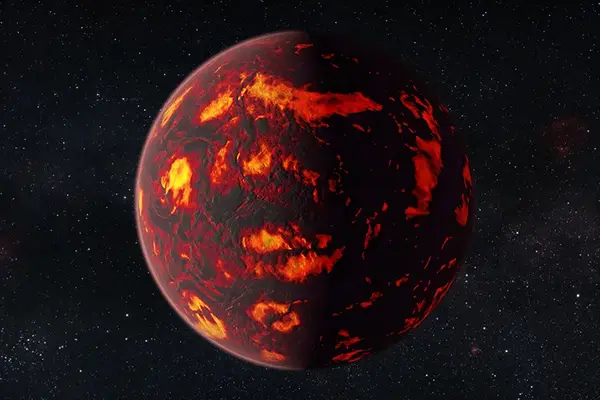Kepler-10b is the first confirmed terrestrial planet identified beyond the Solar System by the Kepler Space Telescope. It orbits one of the 150,000 stars monitored by the spacecraft between the constellations of Cygnus and Lyra. The planet was discovered after several months of data collection during the NASA-directed Kepler Mission, which aims to identify Earth-like planets transiting in front of their host stars. The discovery was announced on January 10, 2011.
Kepler-10b has a mass of 3.72±0.42 Earth masses and a radius of 1.47 Earth radii. However, it is extraordinarily close to its star, Kepler-10, and as a result, is too hot to host life as we know it. Its existence was confirmed using measurements from the W.M. Keck Observatory in Hawaii.
It’s a calm star, gently spinning with a modest magnetic field and few of the solar spots that characterize our own sun. The star is around 560 light-years away from our solar system and is one of the brightest stars that Kepler is tracking. It was the first to be recognized as potentially containing a very small transiting planet. The planet’s transits were first observed in July 2009.

Characteristics
Kepler-10b is most noted for its rocky surface. It has a diameter 1.47 times that of the Earth. The mass of Kepler-10b is 3.72±0.42 times that of Earth and the average density is 6.46±0.73 g cm−3. It orbits its star, Kepler-10, in less than a day, at less than a twentieth of the distance from Mercury to the Sun. Its surface temperature on the star lit side is approximately 1833 K, which is as hot as a blast furnace and hot enough to melt iron.
Though CoRoT-7b was identified before Kepler-10b and has been stated to be rocky, there is more space for different interpretations in the case of CoRoT-7b’s composition than there is for Kepler-10b’s. This is owing to the significantly greater uncertainty in CoRoT-7b’s mass (and, to a lesser extent, radius), as shown in the plot to the left. As a result, CoRoT-7b may be revealed to be a lava-ocean planet, whereas Kepler-10b must be primarily composed of rock or iron. In addition to displaying the range of masses and radii consistent with observations of each planet, the map contains composition curves implied by specific masses and radii.
Kepler-10b is tidally locked to its parent star and has dramatic temperature differences between day and night. It also reflects almost half of the starlight that strikes it. One reason for Kepler-10b’s high Bond albedo could be that it is a coreless rocky planet with surface magma oceans rich in iron oxides.
Kepler-10b circles one of the 150,000 stars monitored by the Kepler spacecraft, a star that is extremely similar to our own Sun in temperature, mass, and size, but older, with an age of nearly 8 billion years, compared to our own Sun’s 4-and-1/2 billion years.
It’s one of the brightest stars being tracked by Kepler, and it’s roughly 560 light years away from our solar system, which means that when the light from this star began its trek toward Earth, European navigators were crossing the Atlantic Ocean for the first time in pursuit of new horizons.
















